
Once There Was and Once There Was Not
Presented in 2019 at the Arab American National Museum, Once there Was and Once There Was Not depicts three vignettes providing a view into scenes the forthcoming graphic novel Portal Fire, each centered around the life of orphan Maro.
Woven Textile Imprint. c. 1327 XED. Unbaked Clay.
On rare occasion cloth used in pottery workshops can leave an imprint on clay that has been forgotten or discarded. The complexity of this flamepoint pattern is odd, considering most potter’s cloths are traditionally simple and made of rags.
Preserved Amber, cross section. c. 1153 XED. Resin, Fiber, Dyes.
This incredible amber slice provides clues to Flamepoint Culture technological capabilities. Numerous fibers and a surprising array of naturally produced dyes lead us to infer a highly advanced level of textile production.
Potsherd. c. 1016 XED. Porcelain, Unknown Glazes.
Recovered from what is believed to be a religious structure, this miniature vessel was likely used in rites and ceremonies. What remains of the glazed pattern has led researchers to believe this vessel was used to promote fertility and abundance in the surrounding agricultural fields.
Book. c. 1001 XED. Paper, Gold Leaf, Unknown Finish.
Found in a sand pit, this miraculously preserved book only increases in mystery once opened, completely devoid of text or pages. Whatever was contained within would have been of great importance, considering the detail of ornamentation.
Textile Fragment. c. 1011 XED. Spun Plant Fibers.
Found together with the miraculously preserved book, this flamepoint pattern cloth is only minimally damaged and weather worn for its age. Analysis shows that producing this woven pattern required an intermediately complex loom.
Hook-ended Tool. c. 1132 XED. Wood.
Decorated in the flamepoint motif, this object appears to be a tool of significance, though for what purpose remains unknown.
*Many of the older physical technologies once used are now forgotten and lost to time as a result of the mid-century Mass Archive Failure .
Ceramic Vessel. c. 1248 XED. Stoneware, Iron oxide glaze.
The designs characteristically known as flamepoint are less than evident here, perhaps due to wear and aging. Alternatively, this may indicate trade with neighboring states or may imply mundane objects for daily use were decorated with simpler designs.
The first vignette is presented as a museum show taking place 1000 years after Maro’s time. Artifacts on display were unearthed from the Karagraglu dig site and belong to the mysteriously vanished ‘Flamepoint’ culture. The didactic labels reflect the archaeologists’ speculations, often erroneous, about the use, meaning and implications of what they have found.
Each artifact relates in some way to Maro’s life and experiences.
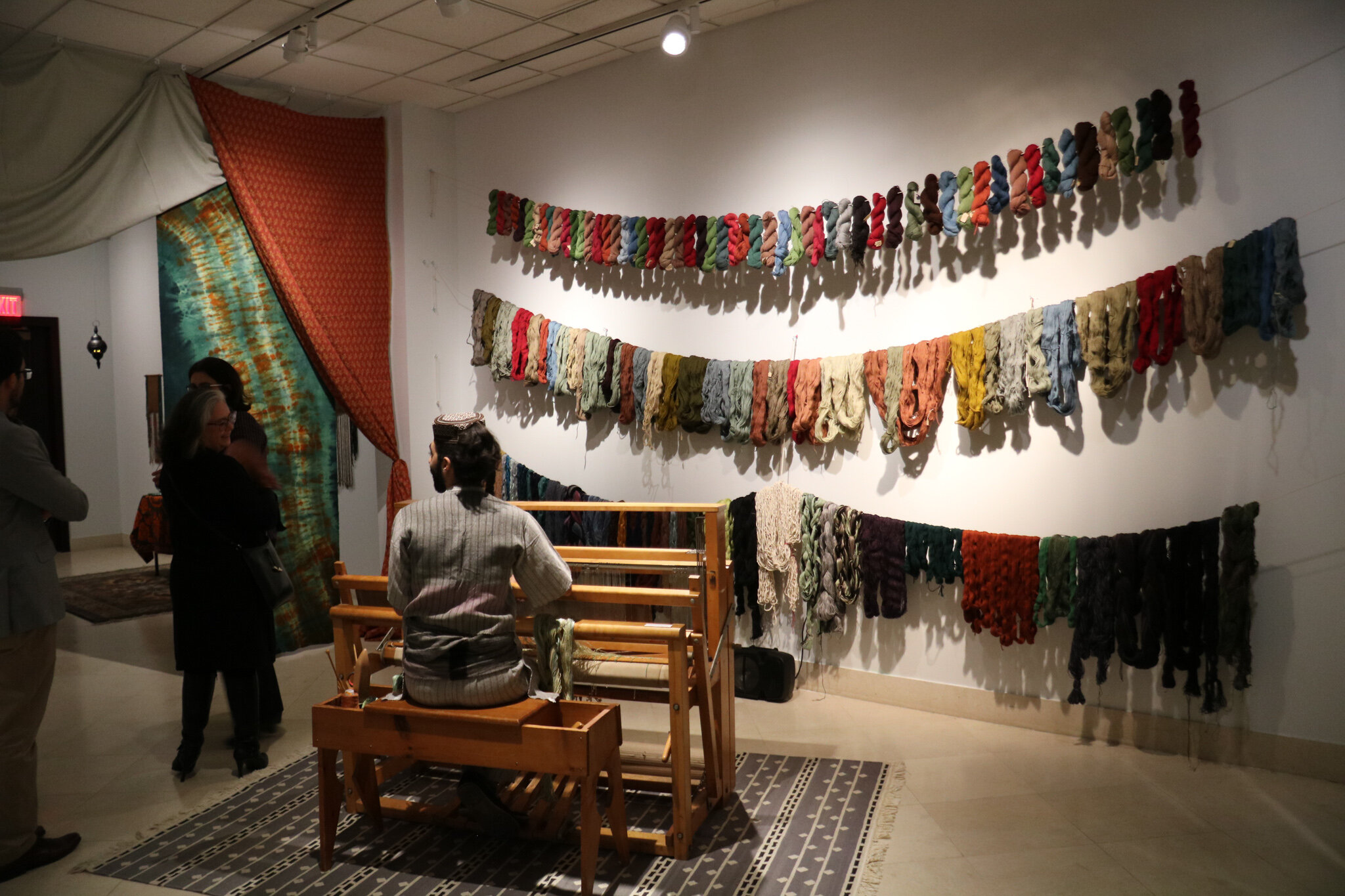

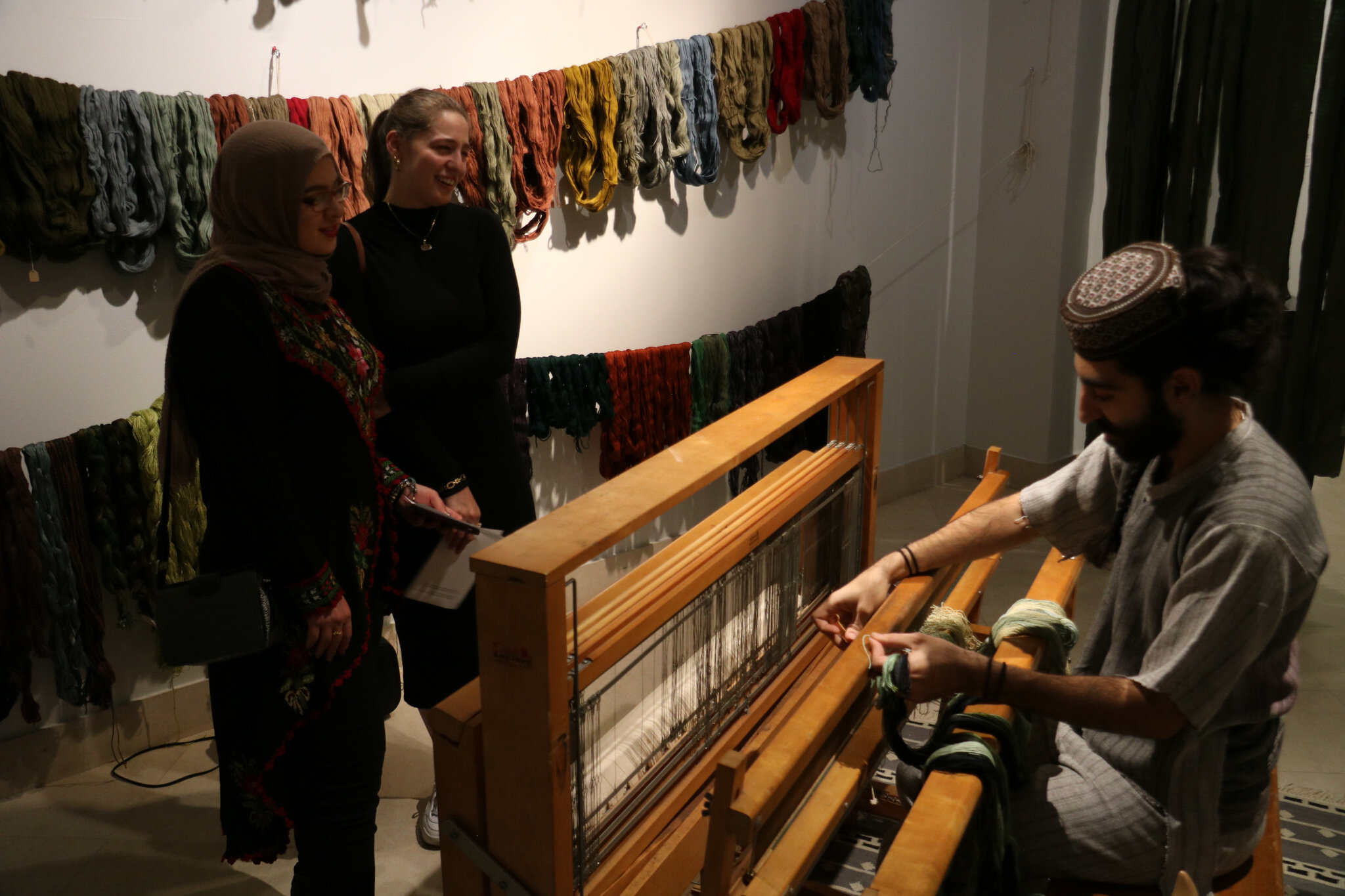
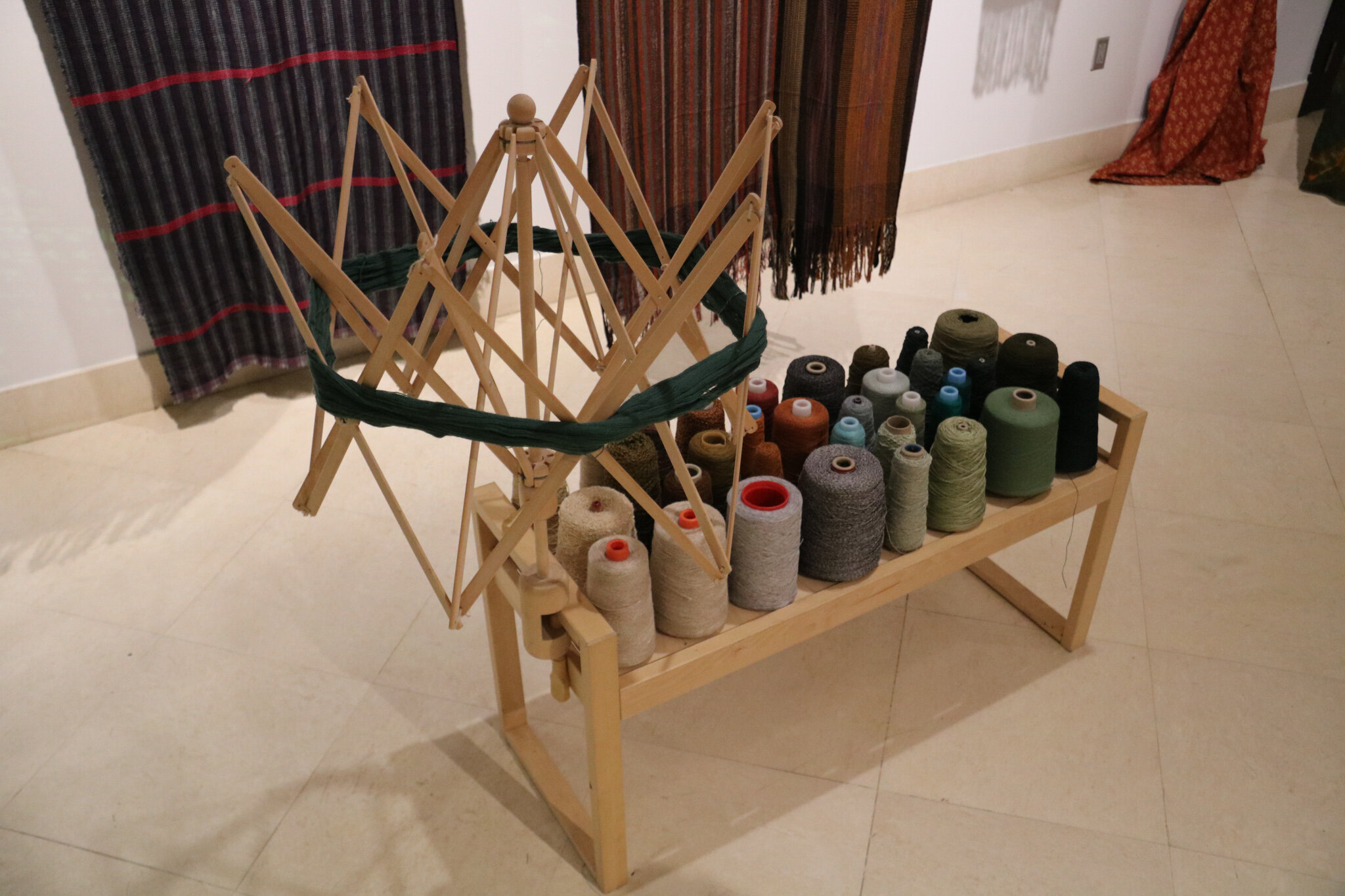
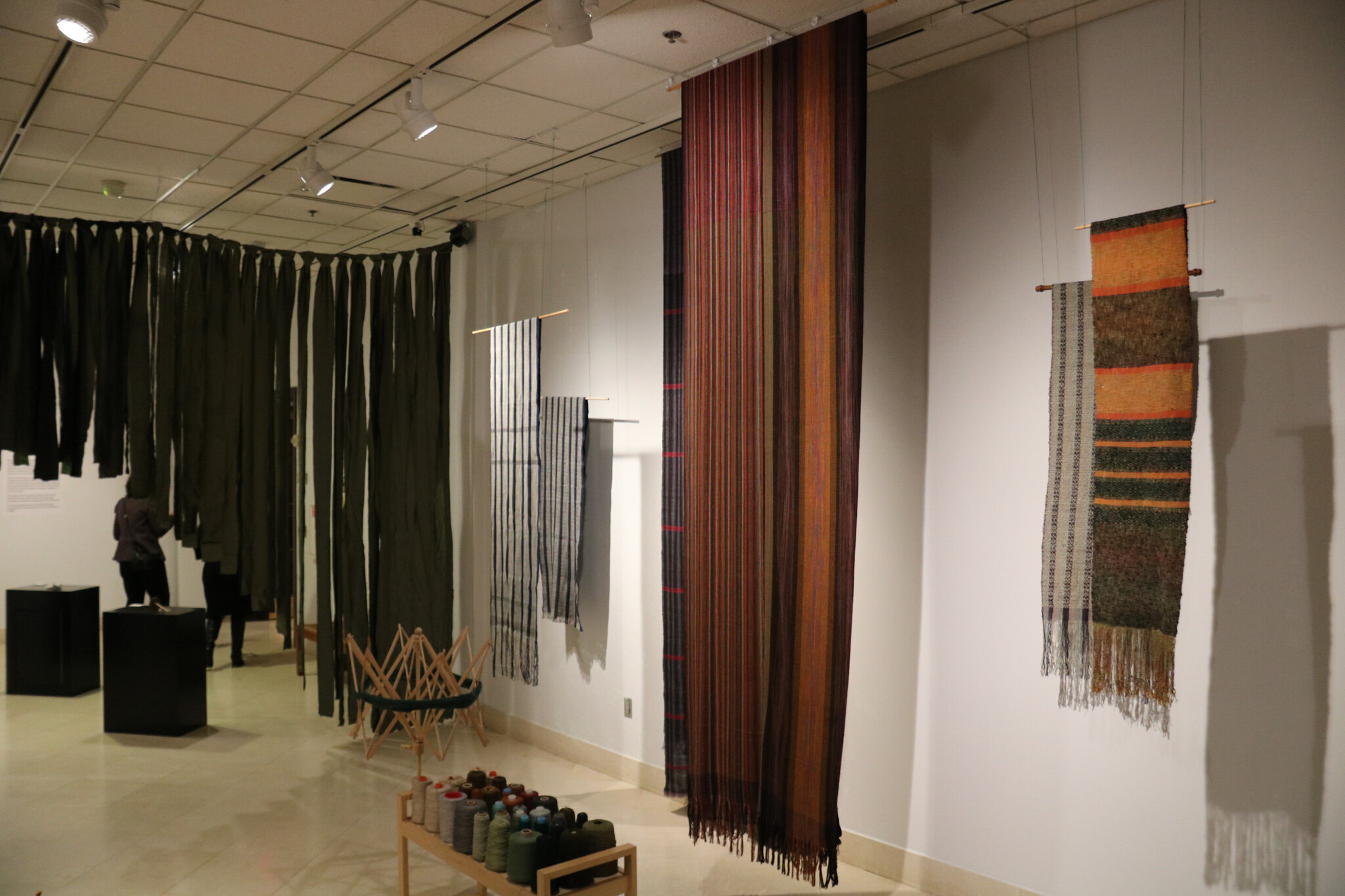
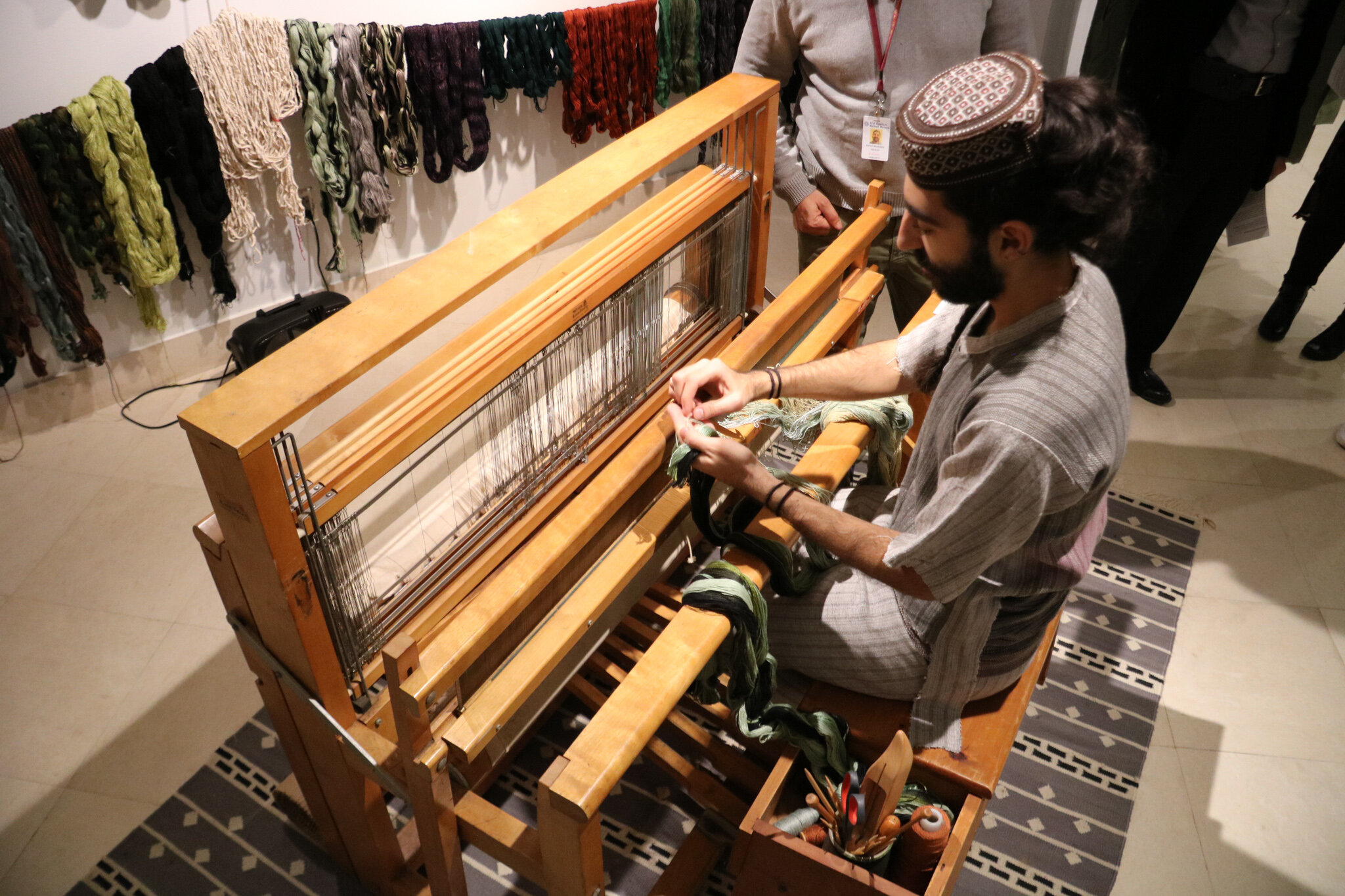
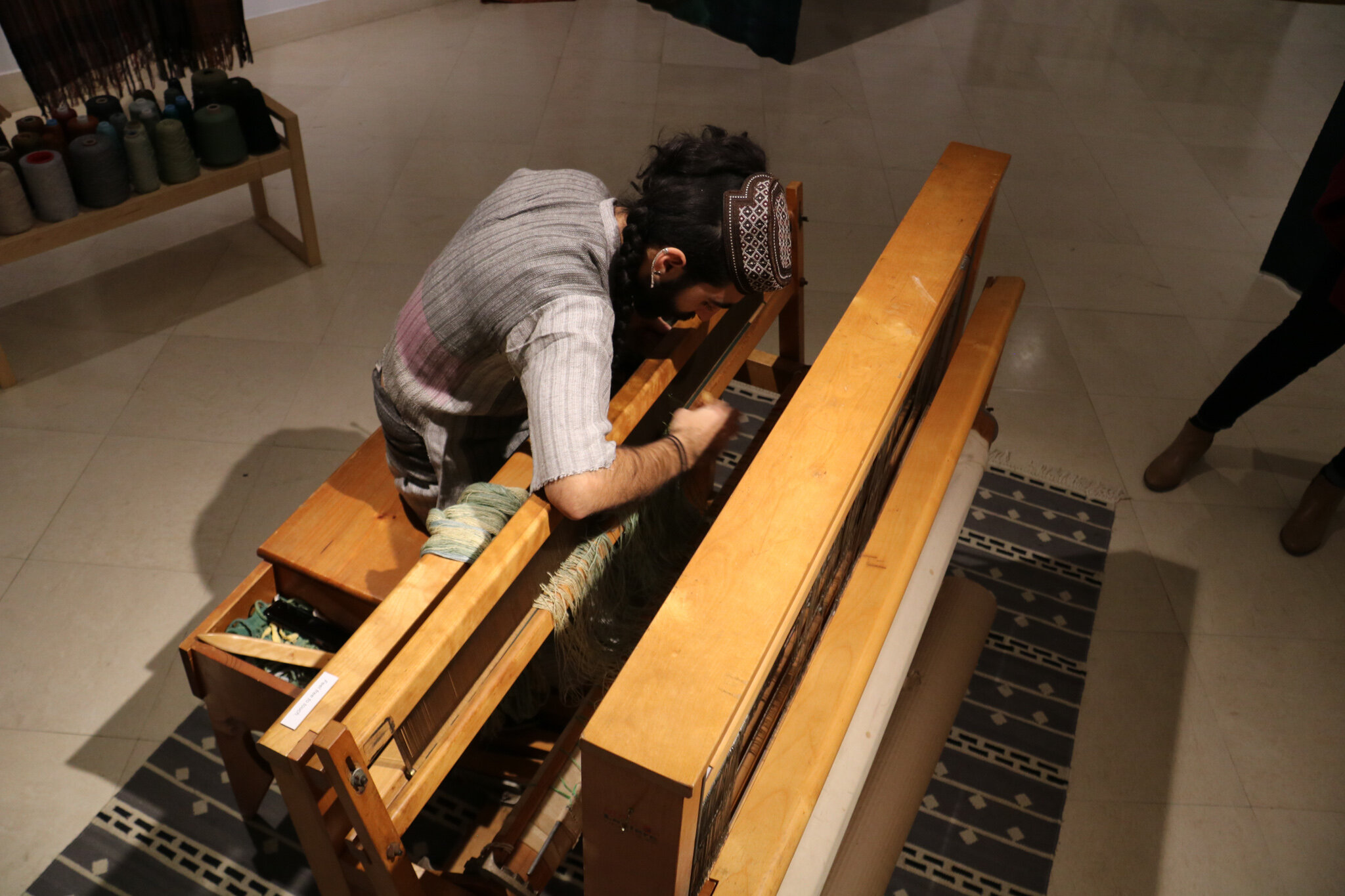
The Weaver’s Tale. Audio on loop in installation.
Maro, listen closely, for this you must remember well.
The weaver’s clan, as you know, is a clan of orphans, bound not by blood but by silken bond. Our symbol is the spider and its spun thread. It is our task to weave the cloth for all the other clans. Some may see us as simple craftsfolk, but our work is far from simple. In order to weave the cloth of a clan, you must know that clan far beyond the surface of their colors or symbols or trades, you must know their personality, their histories, indeed their very essence.
As weavers we must keep and code this knowledge into the cloth we produce. Knowing the clans as we do, we are the only ones who can act as peacekeepers, though we may not aspire to be diplomats or officials.
That should be all for our review, today. Now tell me, how’s your knotting technique coming along?
The third vignette depicts the Maro’s granmother Maryam’s hosting room, accompanied by a looped short story recording and activated during the opening night by Maro’s friends and relatives.
Maryam is of the Snake clan, whose members hold dear the concept of time as a fluid. Though Maro cannot be of the same clan as an orphan, Maryam serves as their primary caretaker. Maryam’s hosting is legendary in her region and always involves a bit of coffee reading… one of the greater traditions of the Snake clan. Her hosting space also includes a shrine to Anarad, the serpentine spirit of fluidic time and the green flame.
The second vignette depicts the weaving workshop in which Maro is an apprentice, accompanied by a looped short story recording and activated during the opening night by Maro’s weaving teacher.
Like all orphans in Azadistan, Maro is a member of the Spider clan, thus unable to hold any official positions or higher social status. The weavers of the Spider clan produce all the cloth for the daily and ceremonial use of the 11 other clans and therefore hold knowledge of their values, traditions and secrets. This makes them excellent mediators in disputes between members of disparate clans. Though they may not hold high status, their indispensable services earn them respect and a more than decent livelihood.
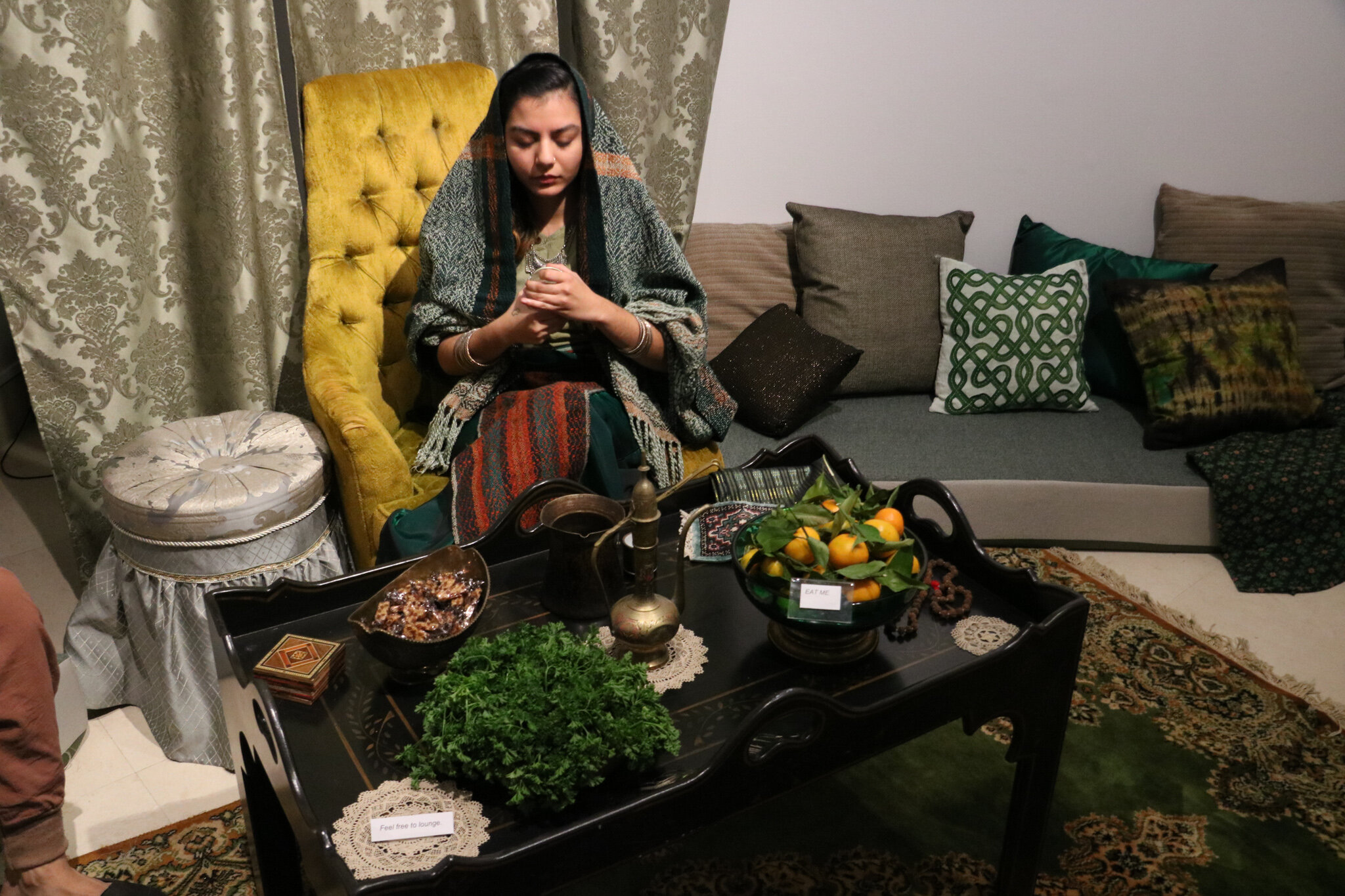
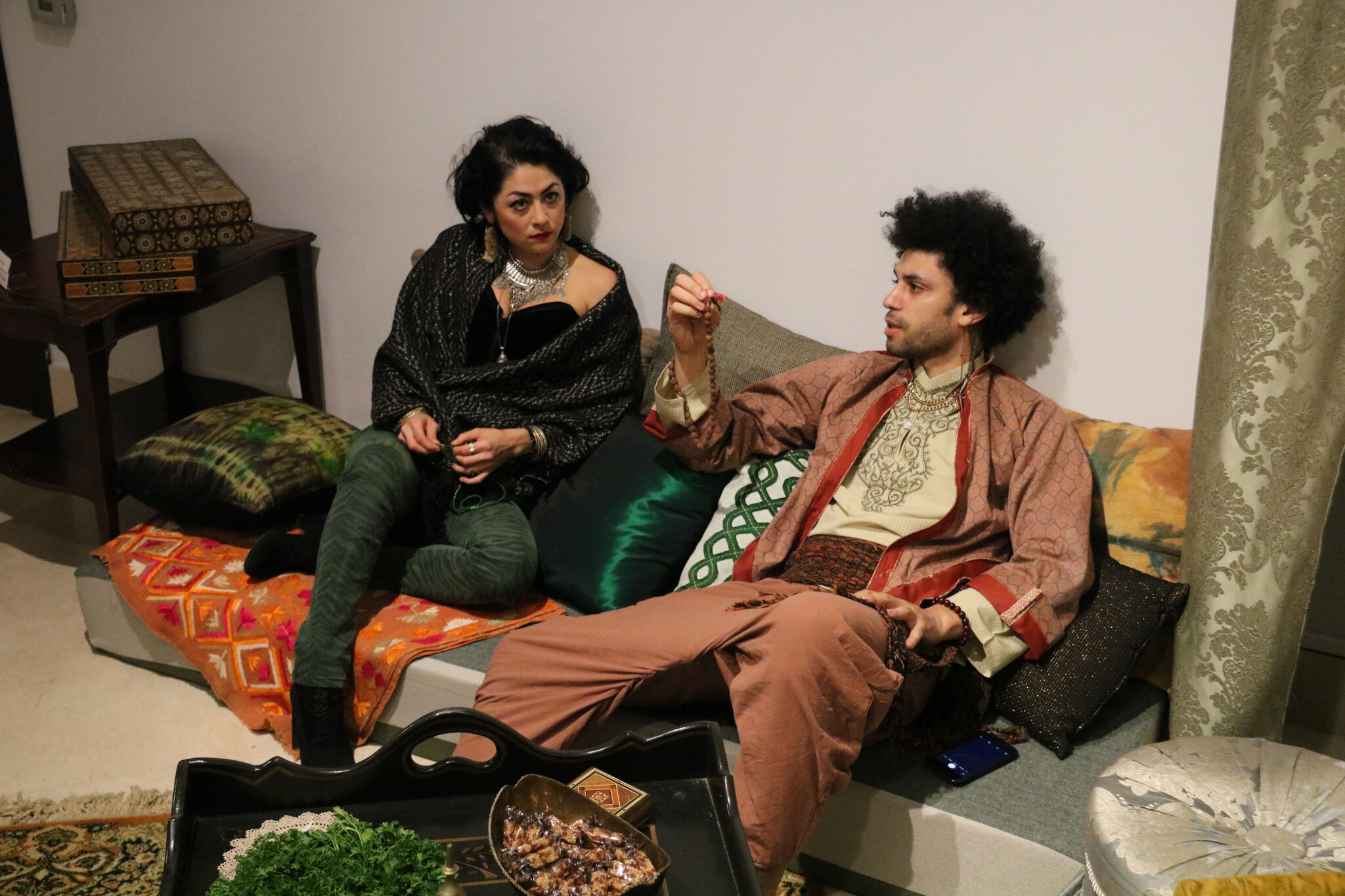
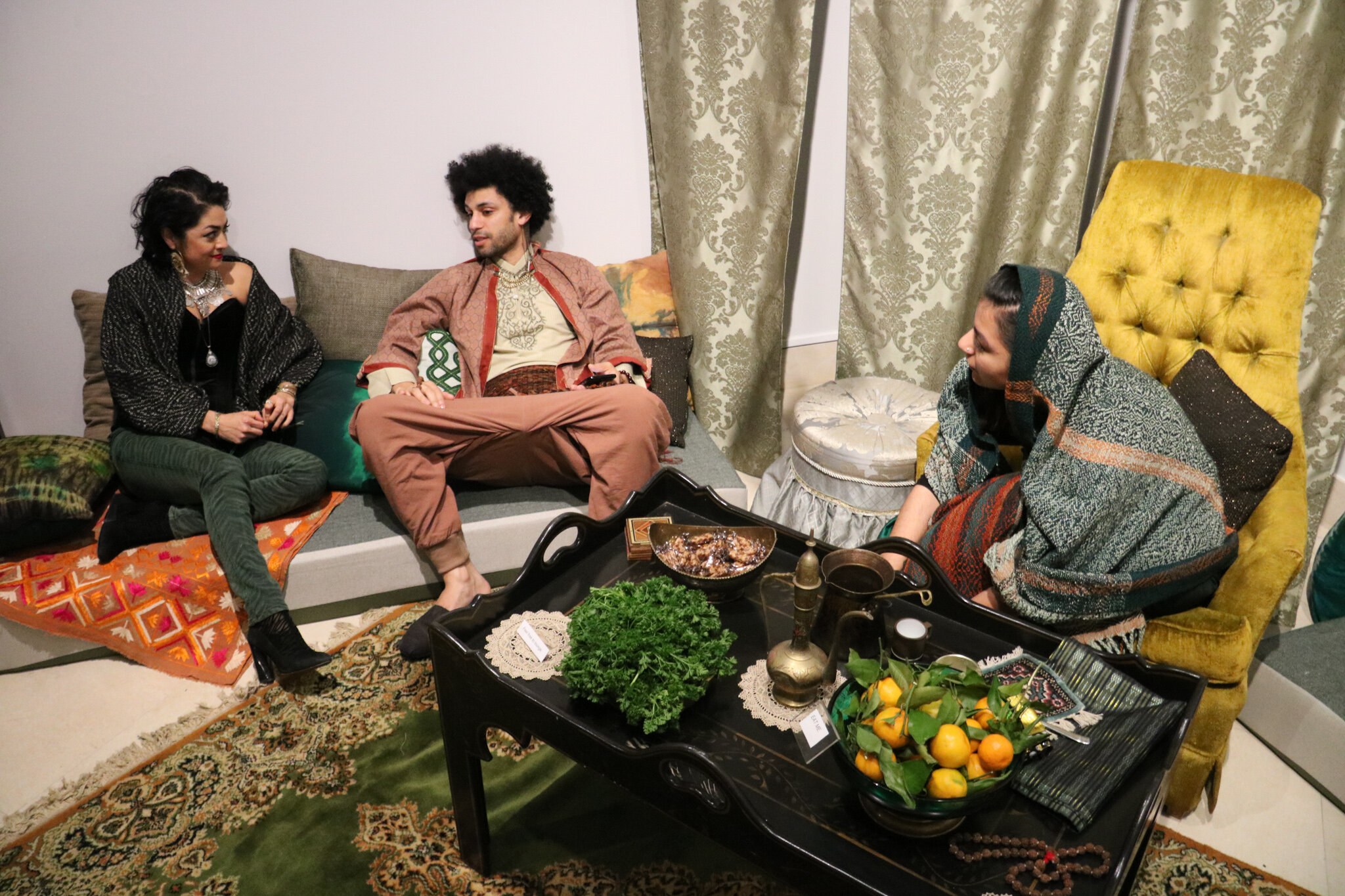
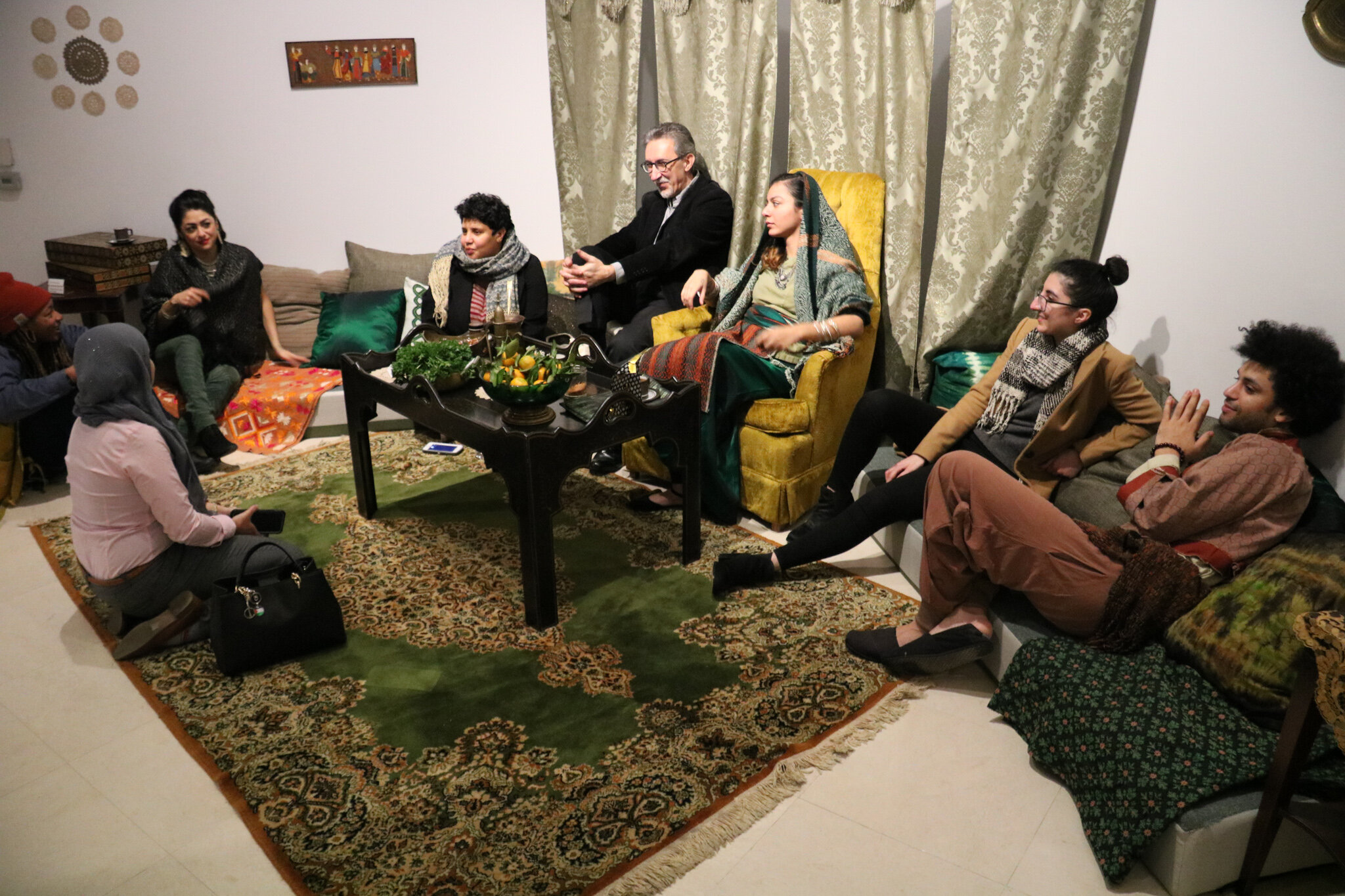
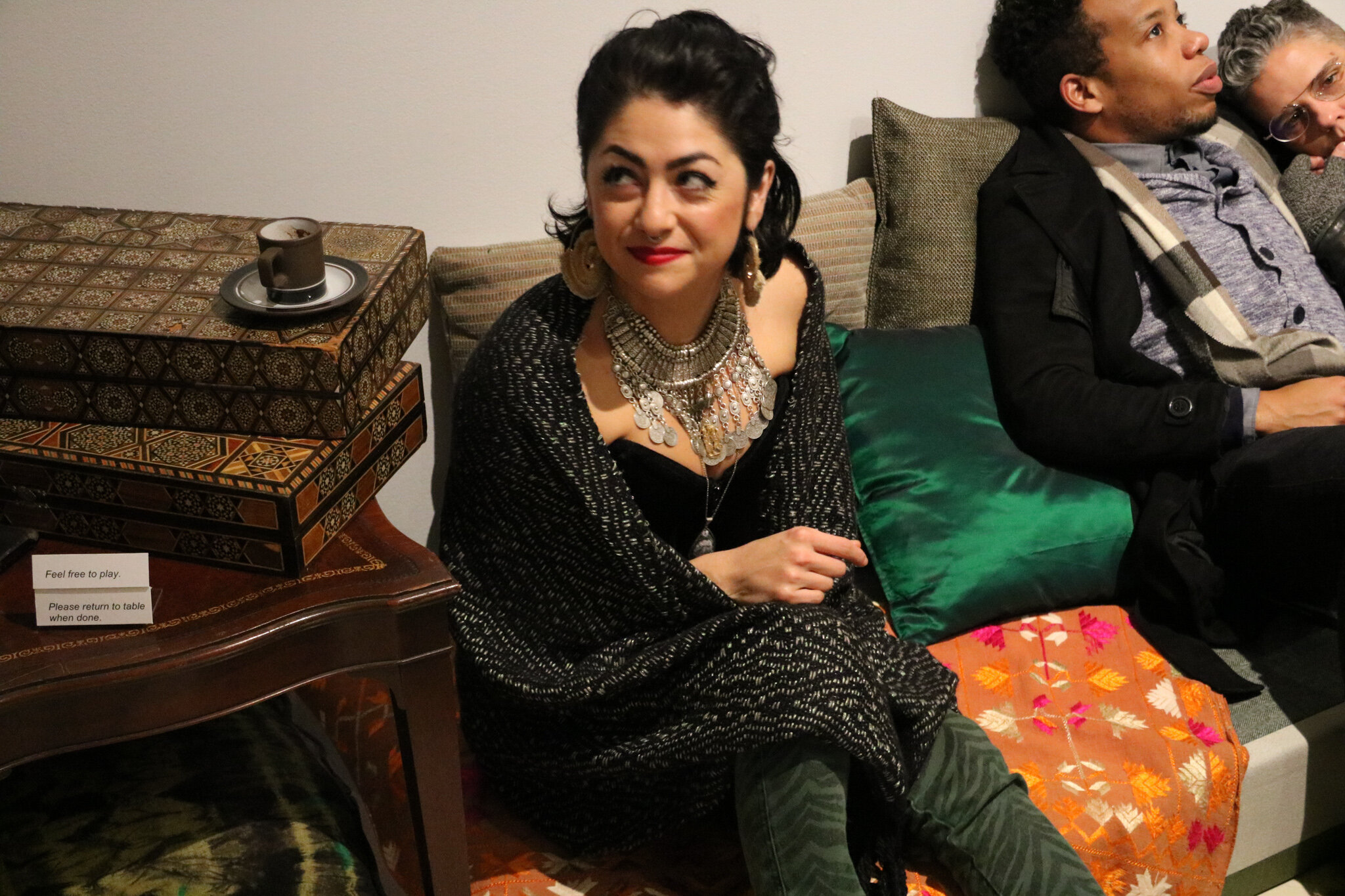
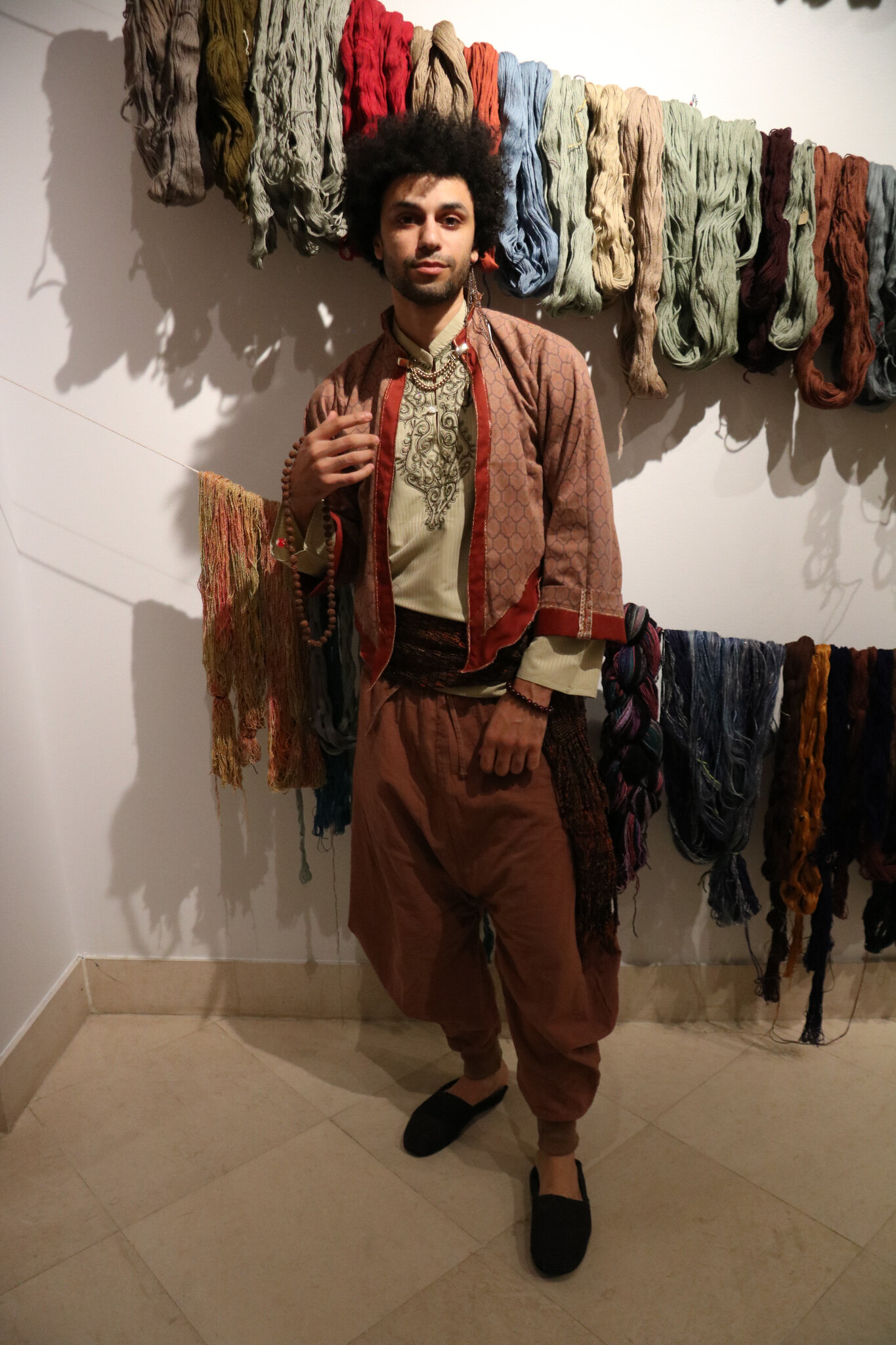
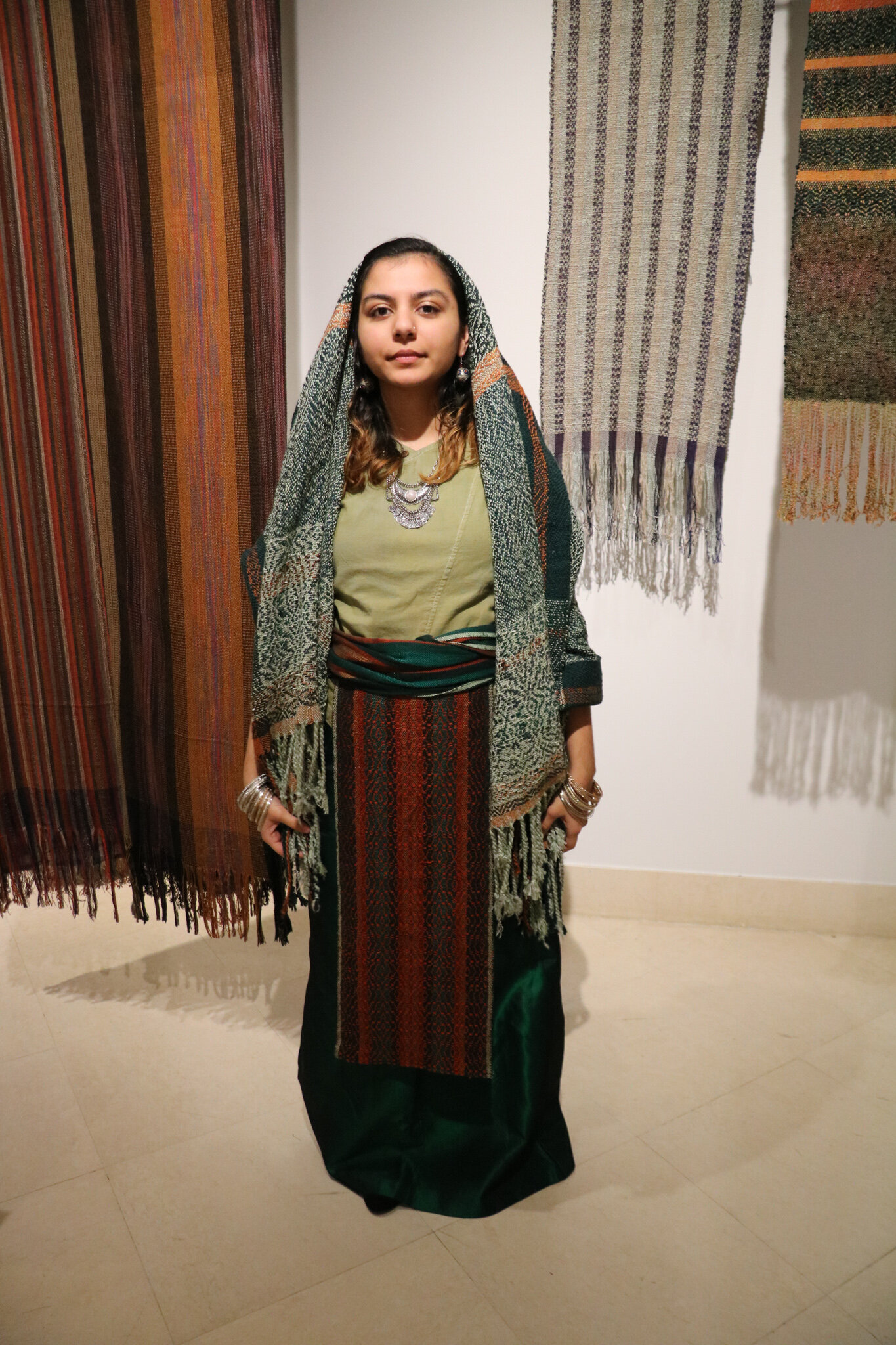
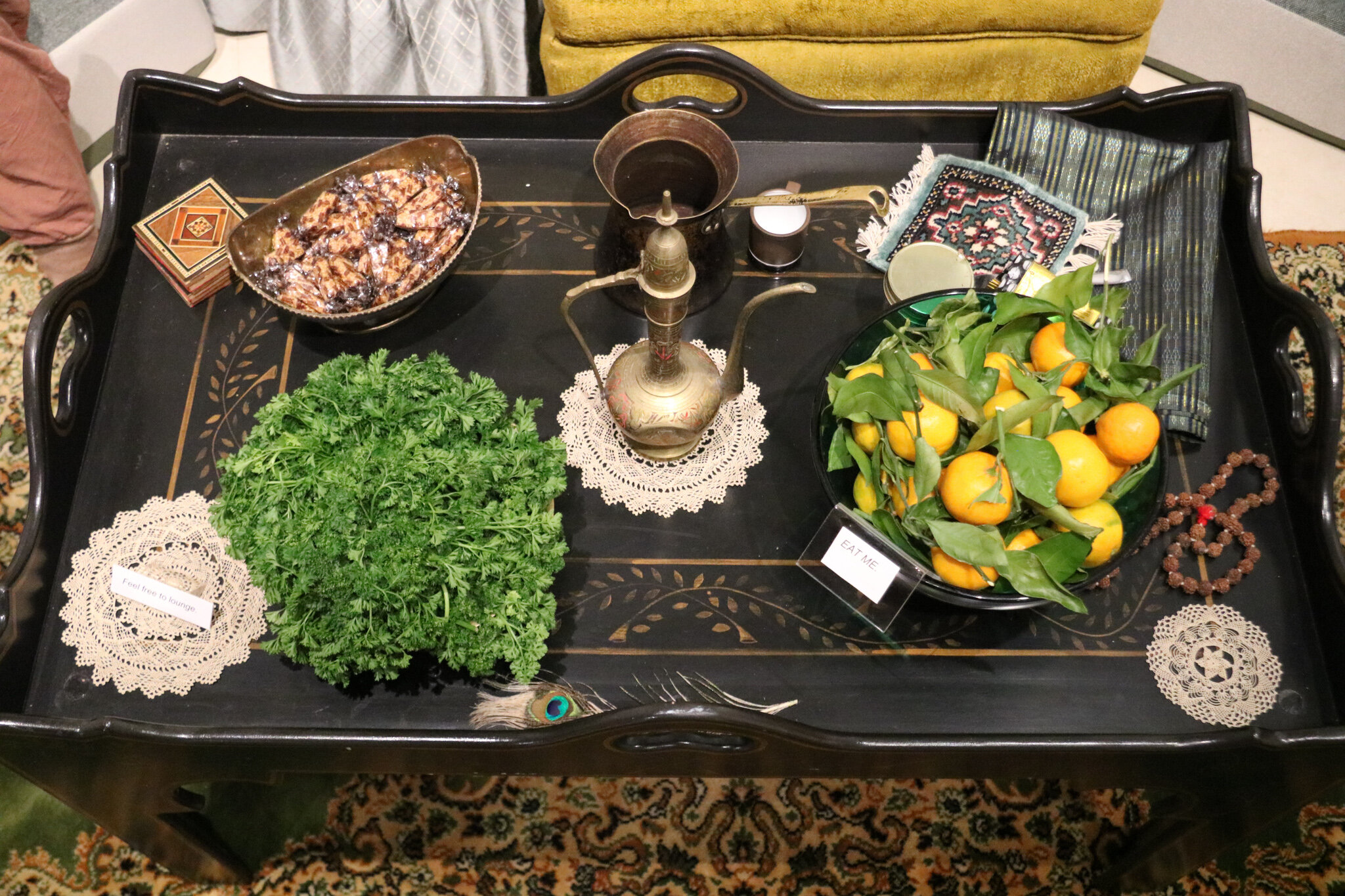
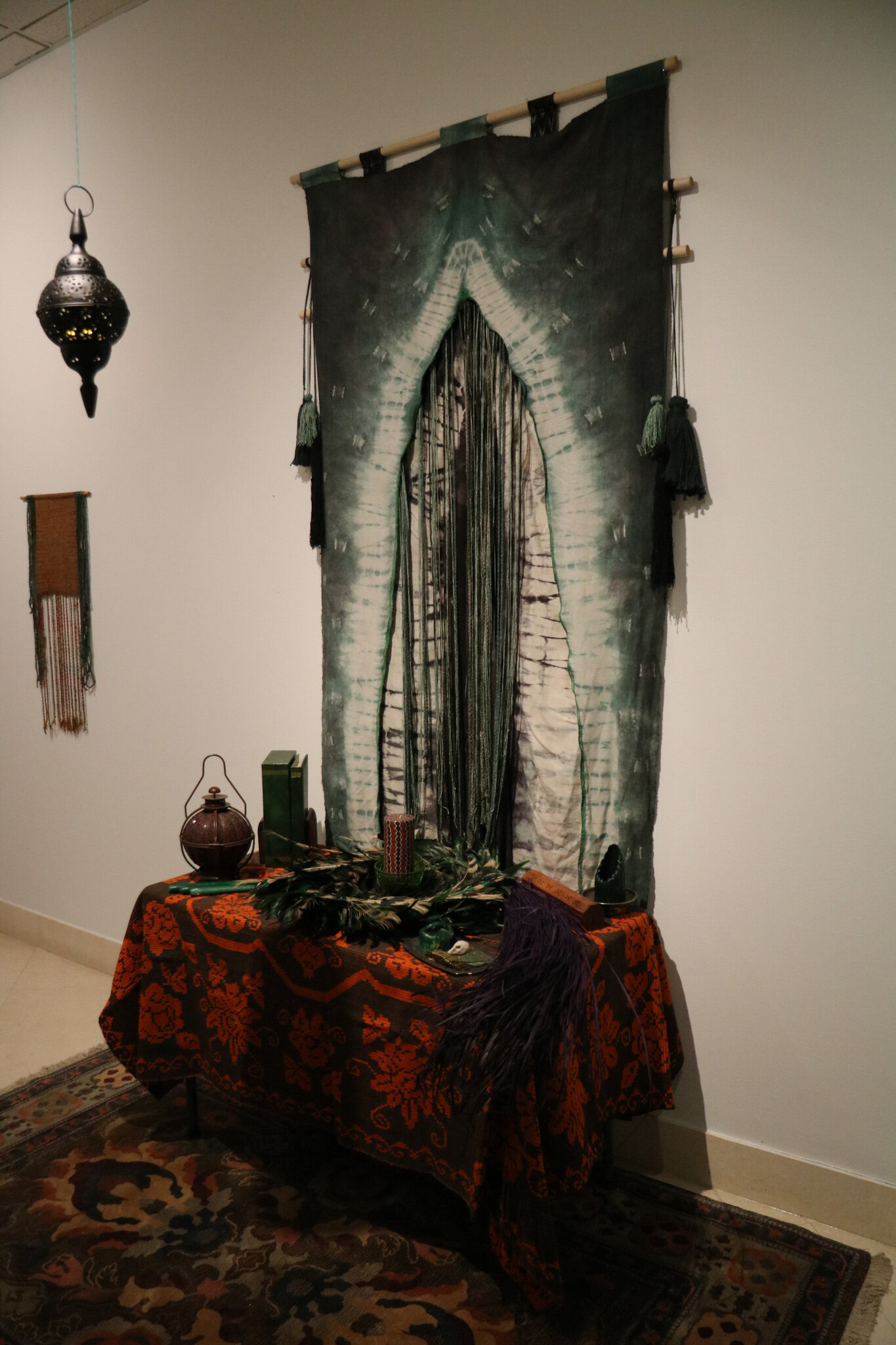
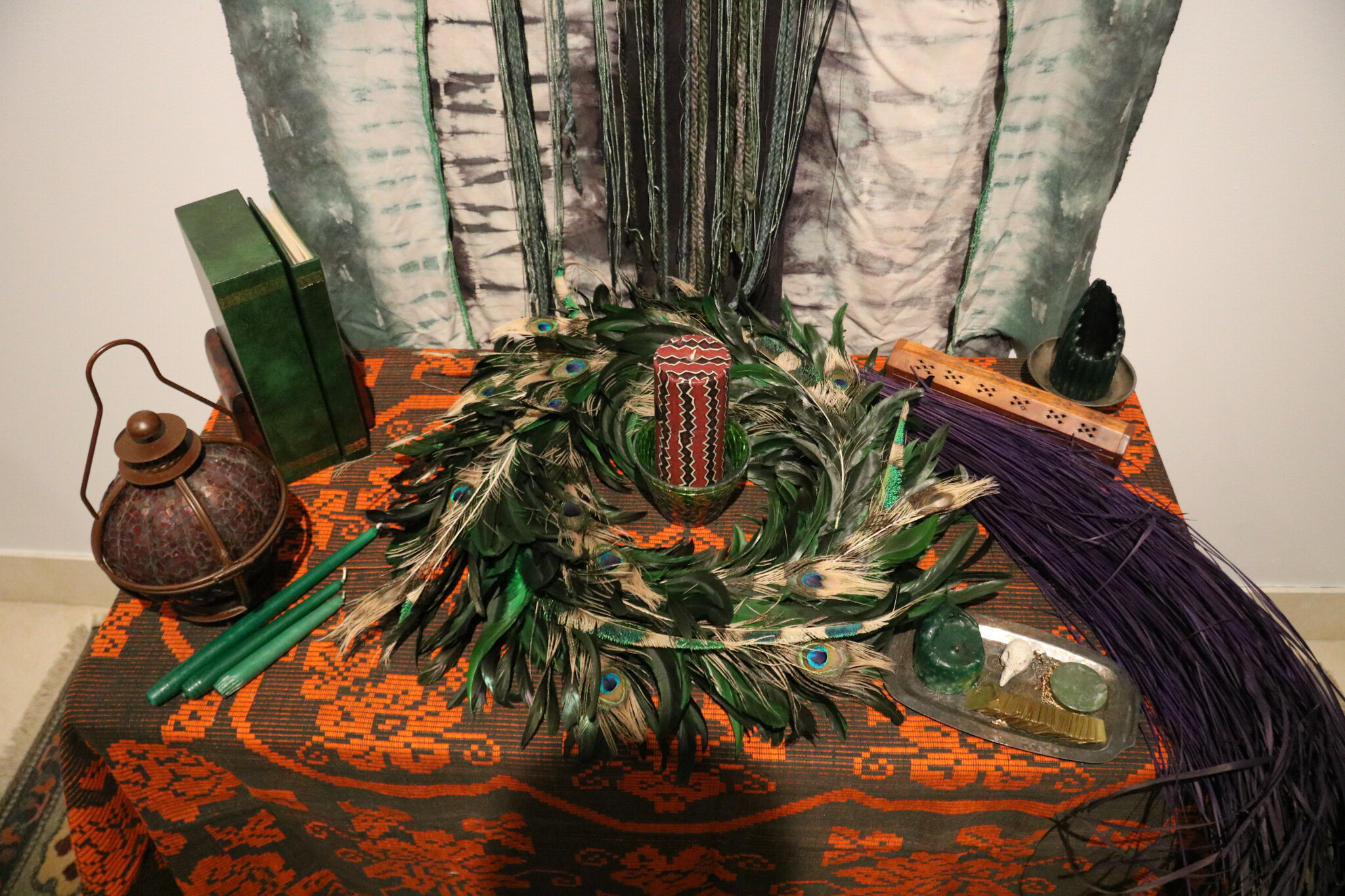
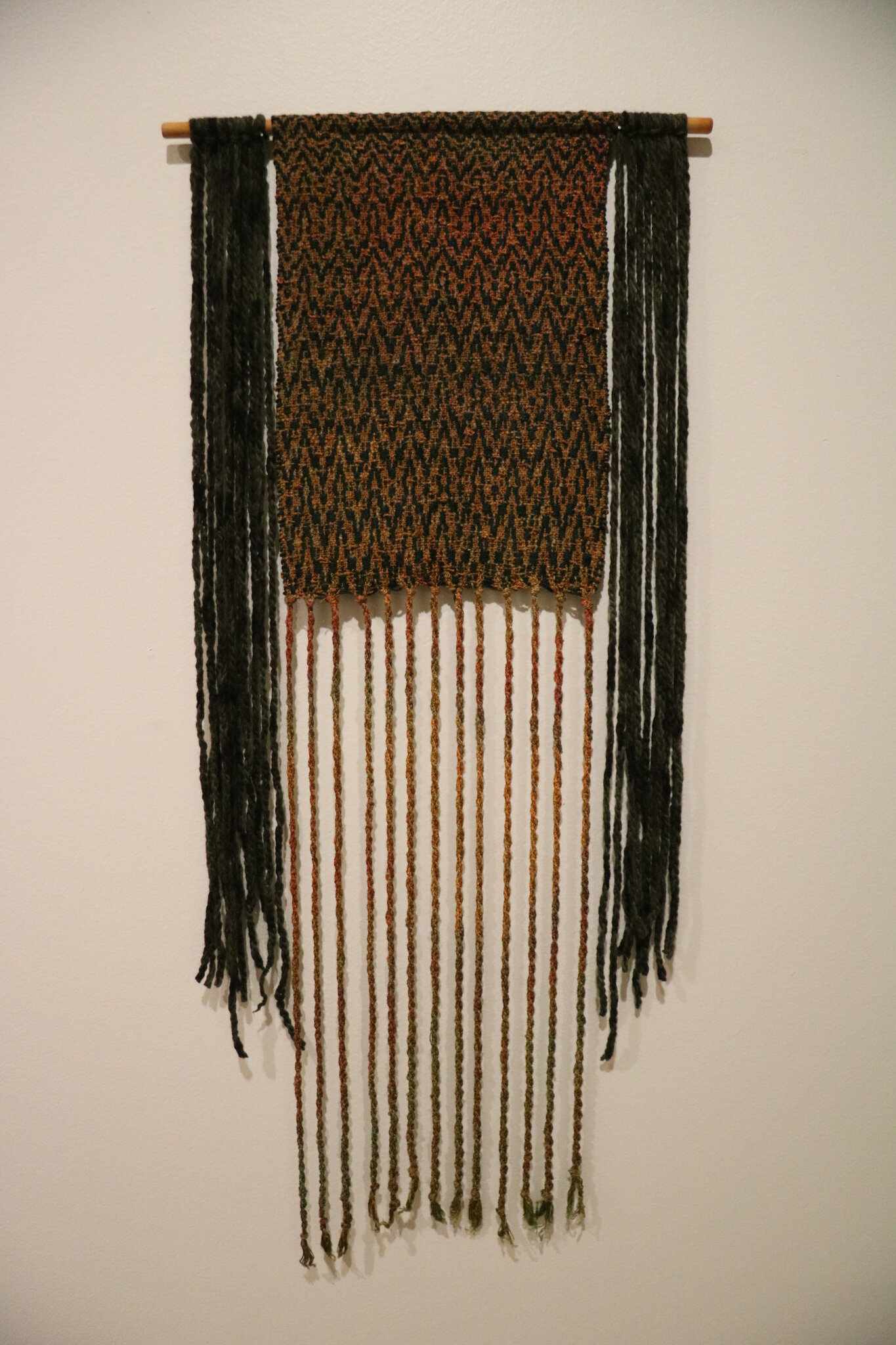
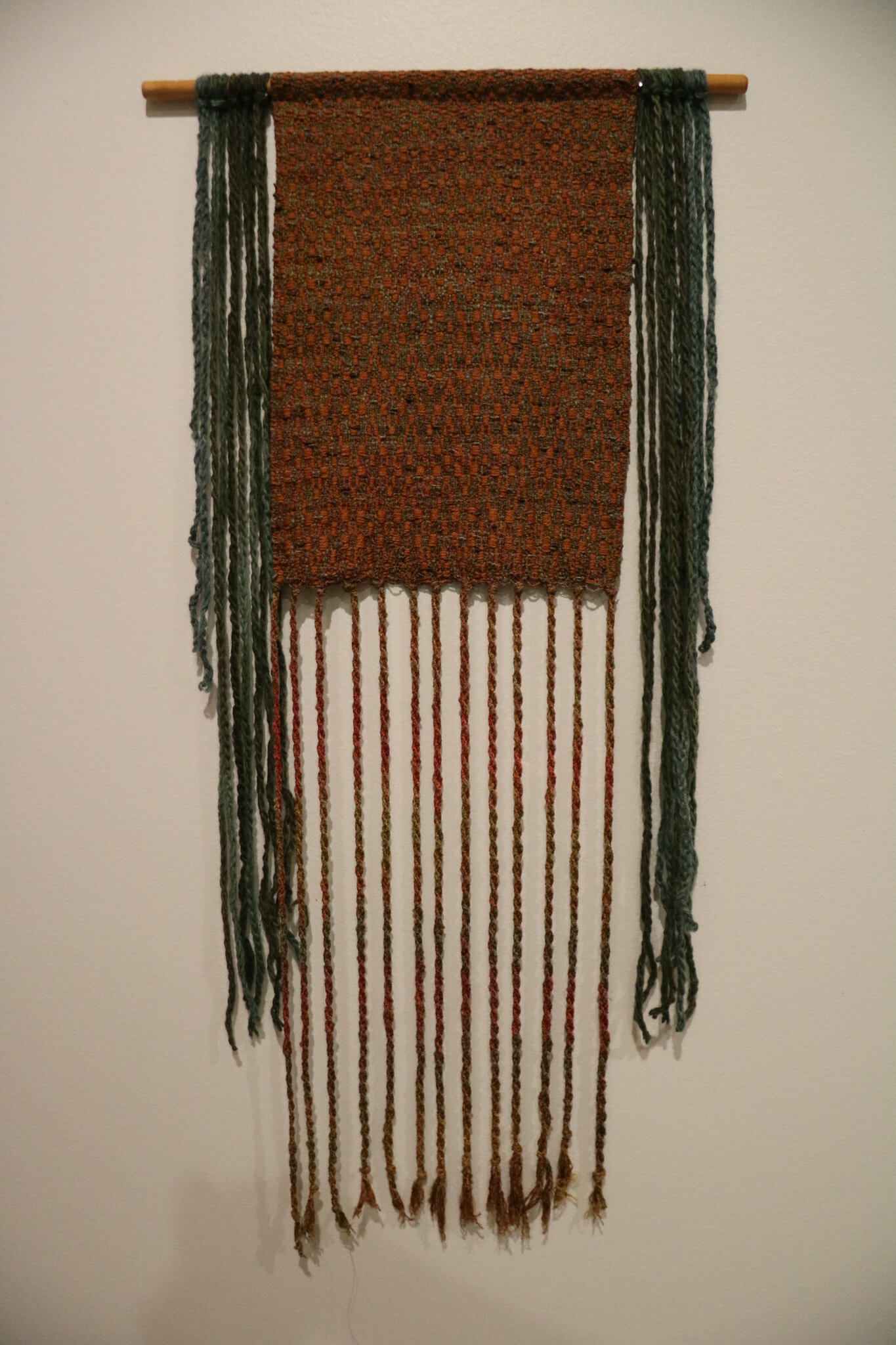
Grandma Maryam’s Tale. Audio on loop in installation.
Oh my heart, You want to hear the tale of Maro again?
So be it.
In every home of our people there is a holy book where we keep records of the dates of births, deaths, weddings, and other important times in the lives of the family. When you, my beloved, were born your parents, bless their souls, left a great mystery under the entry of your birth. Only three letters where your name should be and each separated by a space: M A R. Not a soul knew what name they had chosen and when your parents were taken from us, our relatives wondered: was it Maryam like mine or Mari, Mardiros, Markos, Maral, Marjane, Marwan? Perhaps they had never even made a decision. They all demanded to know, was the baby a boy or a girl, so they could choose a name for their kin and be done with it – knowing you were now an orphan. Since it was decided you were to be in my care, I told them you were neither! For now, my grandchild will be known as Maro and they will decide when they come of age!
Are you satisfied? I know you love this story, but you are short on time!
Now off to work with you, you don’t want to be late for your apprenticeship with Arhan-jan.






